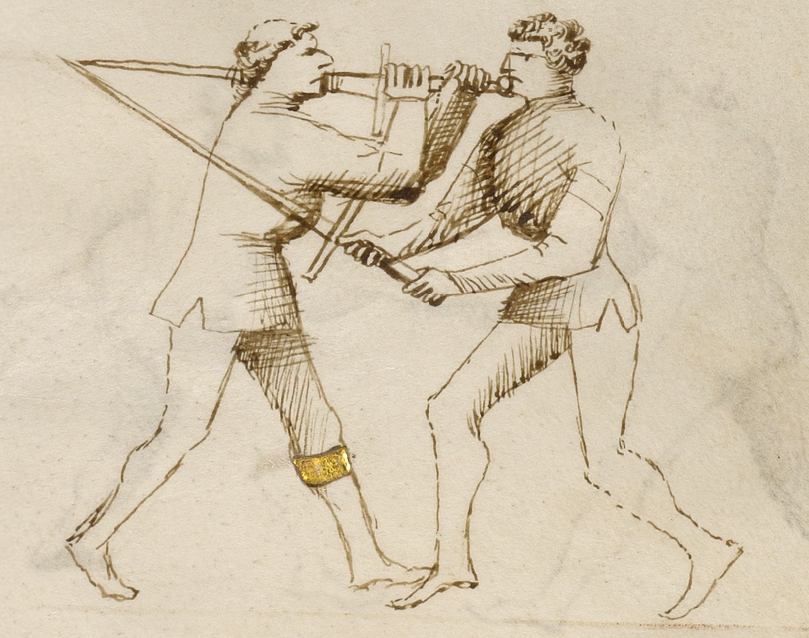The longsword is the primary weapon practised at the DMCA. A longsword is a predominantly
two handed sword used in the late middle ages and into the early renaissance as a side arm for civilian self
defence, as a backup weapon for war and sometimes for duelling (typically fought in armour though not always).
The term longsword (in English at least) is a fairly modern term used to refer to a broad range of
weapons that differ in sizes, weight, balance and numerous other factors. Defining when a longsword ends and
another type of sword begins such as a true two handed sword is a grey area but one useful way to categorise
it would be a cross hilted double edged cut and thrust sword with a grip capable of being comfortably used in
two hands and a long blade that is still short enough to be able to be drawn from a scabbard worn at the hip.

Late medieval daggers come in a few different types and vary within them but by far the most common and popular
types of dagger are the rondel dagger, bollock dagger and baselard.
Regardless of type late medieval
daggers tend to share a basic design, being a long stout blade with little to no flex and an acute but strong
tip, sacrificing cutting potential in order to optimise the thrust. This is due to their role as anti-armour
weapons designed to find small gaps between the plates of armour and puncture the maille (chainmail) protecting
the larger gaps such as the armpit.
Despite this military focus in these daggers design these daggers
were also used and worn in a civilian context for self defence and in some cases also as tool knives. The
bollock dagger in particular was popular in civilian use beginning as a mostly peasants weapon but growing in
popularity to be used by all classes in medieval society.

At the DMCA we practice from various 15th century fencing treatises (manuals) foremost of all those of the Germanic Liechtenauer tradition. Johannes Liechtenauer is a figure we know surprisingly little about despite being one of the most influential fencing masters of the late middle ages, instead it is the students of his tradition who we have to thank for preserving his knowledge in various treatises written over the course of the 15th and early 16th centuries.

Though most of our focus is on the Liechtenauer school of fencing we also learn from the Italian style via treatises written by Fiore Furlano de’I Liberi a late 14th to early 15th century fencing master. These manuals are well illustrated and throughout the text has a strong predisposition towards closing with the opponent and grappling regardless of the weapon.

These sources provide instruction on many types of weapon and deal with both armoured and unarmoured combat. The longsword focused on at the DMCA is mostly unarmoured though the distinction between the two is somewhat fluid, a fully armoured fencer may choose to use ‘’unarmoured’’ techniques against another person who is wearing less armour as they have more exposed openings which can be attacked in conventional ways.